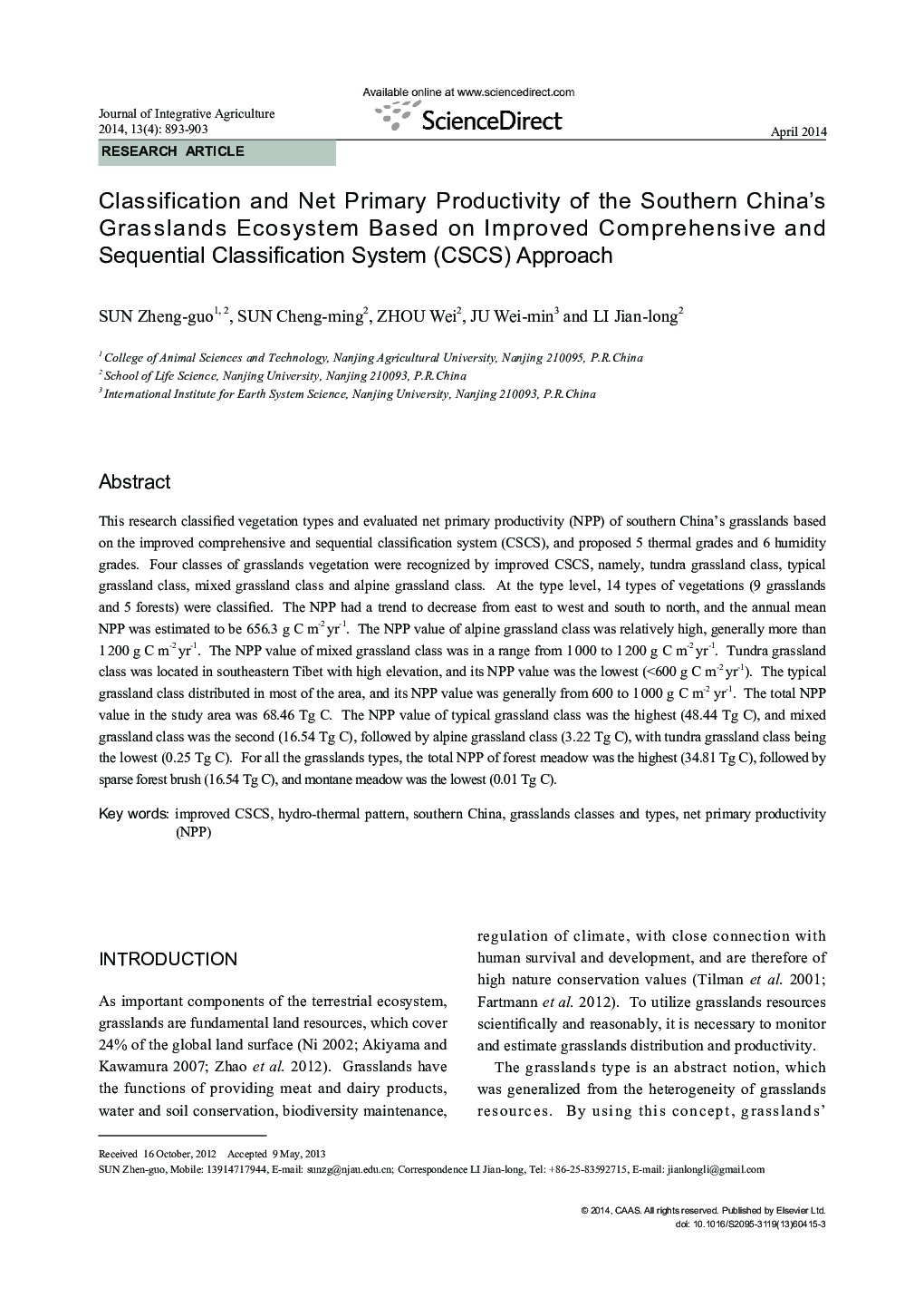| Article ID | Journal | Published Year | Pages | File Type |
|---|---|---|---|---|
| 4494614 | Journal of Integrative Agriculture | 2014 | 11 Pages |
This research classified vegetation types and evaluated net primary productivity (NPP) of southern China's grasslands based on the improved comprehensive and sequential classification system (CSCS), and proposed 5 thermal grades and 6 humidity grades. Four classes of grasslands vegetation were recognized by improved CSCS, namely, tundra grassland class, typical grassland class, mixed grassland class and alpine grassland class. At the type level, 14 types of vegetations (9 grasslands and 5 forests) were classified. The NPP had a trend to decrease from east to west and south to north, and the annual mean NPP was estimated to be 656.3 g C m−2 yr−1. The NPP value of alpine grassland class was relatively high, generally more than 1 200 g C m−2 yr−1. The NPP value of mixed grassland class was in a range from 1 000 to 1 200 g C m−2 yr−1. Tundra grassland class was located in southeastern Tibet with high elevation, and its NPP value was the lowest (<600 g C m−2 yr−1). The typical grassland class distributed in most of the area, and its NPP value was generally from 600 to 1 000 g C m−2 yr−1. The total NPP value in the study area was 68.46 Tg C. The NPP value of typical grassland class was the highest (48.44 Tg C), and mixed grassland class was the second (16.54 Tg C), followed by alpine grassland class (3.22 Tg C), with tundra grassland class being the lowest (0.25 Tg C). For all the grasslands types, the total NPP of forest meadow was the highest (34.81 Tg C), followed by sparse forest brush (16.54 Tg C), and montane meadow was the lowest (0.01 Tg C).
